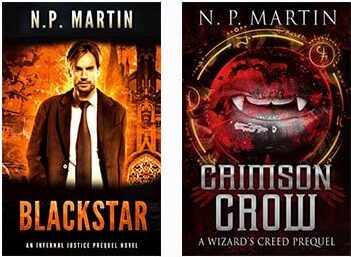How To Write Your First Non-Fiction Book And Get Started As An Indie Author Part 2: Outlining
How To Write Your First Non-Fiction Book And Get Started As An Indie Author Part 2: Outlining
By Neal Martin/ September 3, 2014
Last Updated April 27, 2023

Welcome back to the second part of this series on how to write and publish your first non-fiction book and start earning as an indie author.
If you followed the steps in the first part of the series you should now have a good idea about the type of book you want to write. You should have also researched the market for your book on Amazon.
Assuming your idea is good to go and there’s a market there for it, it’s time now to look at outlining the book in preparation for writing it, so let’s get started on that.
Step 2: Outline Your Book
Believe it or not, most of the hard work is done by this stage. You’ve chosen a suitable subject to write about, done your niche research and now have a good idea of what your book needs to be like. Now you have to decide what you are going to put in your book.
The Big Idea
Most successful non-fiction books are based around one single idea, rather than a comprehensive overview of an entire subject. In actual fact, you should be able to condense your idea down into a single sentence.
So for instance, rather than write a book on general self help, where you try to cover every aspect of the subject, narrow your focus so that you concentrate on just one or a few different aspects.
Examples of that would be, The Seven Habits Of Highly Effective People, How To Win Friends And Influence People, Think And Grow Rich and The Secret. Those are all mega-successful books in the self help field, but each of those books takes a narrow focus and only deals with particular aspects of a bigger field.
This is what you must try and do with your book as well. If you are writing about golf, write a book on how to improve your golf swing. If you are writing about dieting, write a book about a specialist diet.
You get the idea. The more focused and narrowly defined your book is the better. People don’t really go for general books, they go for more specific books.
Remember: people who read non-fiction generally do so because they have a particular problem they want solved. They want to learn how to make more money online, they want a particular exercise and fitness regime or they want to learn how to survive a zombie apocalypse.
Drill down as far as you can with your idea. Really define the specific problem you want your book to solve or help people with. If you do this, your book is much more likely to make sales.
As an exercise, write down the central concept or idea of your book in one single sentence, or two at the most. Doing this will help you focus on what’s important so you don’t end up including stuff in your book that isn’t needed.
This exercise will also help you define your audience which will help with marketing down the line. A working title should suggest itself to you as well.
Having a working title will help you focus while you write.
Book Series
If you find that you have multiple ideas around the same subject, consider writing a series of books instead of just one. Writing a series is a great idea anyway for lots of reasons. A series of books on the same subject is appealing to readers and you can use each book to sell the others, helping you make more sales and thus more money.
Don’t be afraid to focus on a single aspect for your first book. Remember that you can get away with writing a short book, as long as you help solve a problem for the reader. In subsequent books you can focus on other aspects, solving one problem at a time with each book.
If you think you have the material to plan a series of books, I say go for it.
Knowing Your Subject
Let me just say at this stage that the better you know your subject, the easier the planning and writing process will be. If you happen to be an authority of some kind on your chosen subject, so much the better, for that means you can inject your own unique perspective into the book and perhaps write about it in a way that hasn’t been done before.
This is what set my first book apart from all the others in the self defense niche. The subjects I dealt with in the book had been written about many times before by loads of different authors, but the way I wrote about those subjects was unlike any other author.
I focused on a very specific perspective in my first book (like we just talked about), a perspective that had rarely been written about (the psychology of self defense). Coupled with the knowledge and experience I brought to bear on that subject, my book ended up standing out from the crowd. That’s why it was a bestseller for a long while and why it continues to sell well two years after publication.
So do your best to bring something new to the table. Readers will love you for it and you’ll sell more books.
Don’t be afraid to do research either. With non-fiction writing, there is always research involved. No matter how well you know your subject, there will usually be small gaps in your knowledge that you will need to fill.
Just don’t plagiarize other peoples work. Take whatever knowledge and ideas you need and put them across in your own way, doing your best to tie them into what you already know.
The Outlining Process
A good outline will make the process of writing your book a whole lot easier. If you dived right in to the writing at this stage I doubt you’d get very far.
A non-fiction book must have a logical flow to it. That’s not really something you are going to achieve just by sitting down and flying by the seat of your pants.
Even if you do manage to make it to the end you will almost certainly have to redraft many times before the book is satisfactory in terms of structure and flow.
Multiple drafts take time and time equals money. That’s not a very efficient way to approach writing a book. A good outline will save you a lot of time and effort in the long run, not to mention give you something concrete to focus on while writing.
An outline is just the skeleton of your book. The creativity comes when you start writing to put flesh on those bones.
For your outline, we are going to write out some chapter headings. At this stage you should know what angle you intend to write from. Having a good angle to approach your book from is important.
The more unique that angle is the better. Try to go for something that’s going to hook the reader. Instead of a general take on a familiar subject, drill down further and see if you can’t find a better hook.
For instance, my second book was about self defense again, but my angle was completely unique. I wrote about how to teach self defense, which few if any authors had ever done before. That made my book stand out, and it showed when it came to sales. That book was also a bestseller.
If you know your subject well enough, you should have a pretty good idea of how to break it down into individual topics. It’s these individual topics that are going to form the structure of your book. Write down all the topics and ideas you want to cover in the book.
Don’t forget to include the things you discovered during your research on Amazon, the things that the bestselling books in your niche all have included and the things that readers in that niche want to see. Leave out the things readers don’t want to see.
Once you have a list, arrange it into some kind of order.
The point of arranging your topics is to give your book flow. You can’t just cobble together a load of disjointed ideas. They all need to be related in some way, preferably with one leading on to the next in a logical fashion.
Once you do this, your book will practically be written. Seriously, all you have to do now is flesh out each of those chapters, adding sub-chapters if need be, as well as bullet points about what you want to cover in each chapter.
You should now be able to see how your finished book is going to look structurally. Does it seem like it will take a reader by the hand as you show them, in a logical fashion, how to solve a particular problem, or how to improve a particular aspect of their lives?
If it does, that’s great; you’re ready for the next step. If not, go back and restructure your outline so it makes sense and the ideas flow better.
That brings us to the end of this second part of the series. In the part we look at the process of writing the book. In the meantime, keep working on your outline. The better your outline, the easier the next step will be.
LATEST RELEASE

DARK URBAN FANTASY
LATEST POSTS
HIRE MY COVER DESIGNER
STUFF I WRITE ABOUT
Audiobooks Author Updates Blogging Book Cover Design Characters Clive Barker Conspiracies Dark Fantasy Fiction Dark Fiction Dark Urban Fantasy Deadson Confidential Drakeverse Ethan Drake Series Fiction Writing H.R. Giger Hellblazer Horror Humor Influences Internet John Constantine Marketing Mastery Motivation Movies Music Mythology Negativity Non-Fiction Writing Personal Development Productivity Purpose Reviews Sandman Slim Self-Publishing Short Stories Social Media Spirtuality Subconcious Tropes TV Shows Urban Fantasy Writer's Doubt Writing Writing Voice












Leave a Reply